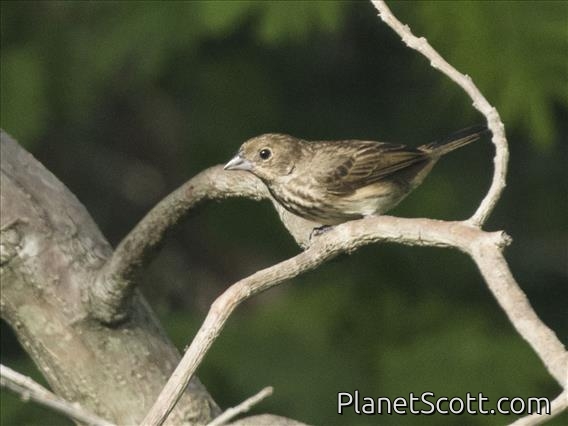Blue-black Grassquit (Volatinia jacarina)

Blue-black Grassquit (Volatinia jacarina) - Female

Blue-black Grassquit (Volatinia jacarina)


×



Blue-black Grassquit (Volatinia jacarina) - Female

Blue-black Grassquit (Volatinia jacarina)
About Blue-black Grassquit (Volatinia jacarina)
- Kingdom: Animals
- Phylum: Chordates
- Class: Birds
- Order: Perching Birds
- Family: Old World Buntings
The blue-black grassquit is a small Neotropical bird in the tanager family, Thraupidae. It is the only member of the genus Volatinia. It is a common and widespread bird that breeds from southern Mexico through Central America, and South America as far as northern Chile, Argentina, and Paraguay, and in Trinidad and Tobago. A male was also observed in Graham County, Arizona, on July 15 and July 17, 2023.
Source: Wikipedia
Visits
-
2006-11-24
Zamora, Ecuador -
2006-12-19
Puerto Quito, Ecuador -
-
2009-01-27
Barton Creek, Belize -
2009-02-24
Puerto Jiminez, Costa Rica -
2009-03-18
Mogue, Panama -
2009-03-19
Punta Patino, Panama -
-
-
-
-
-
-
-
-
-




